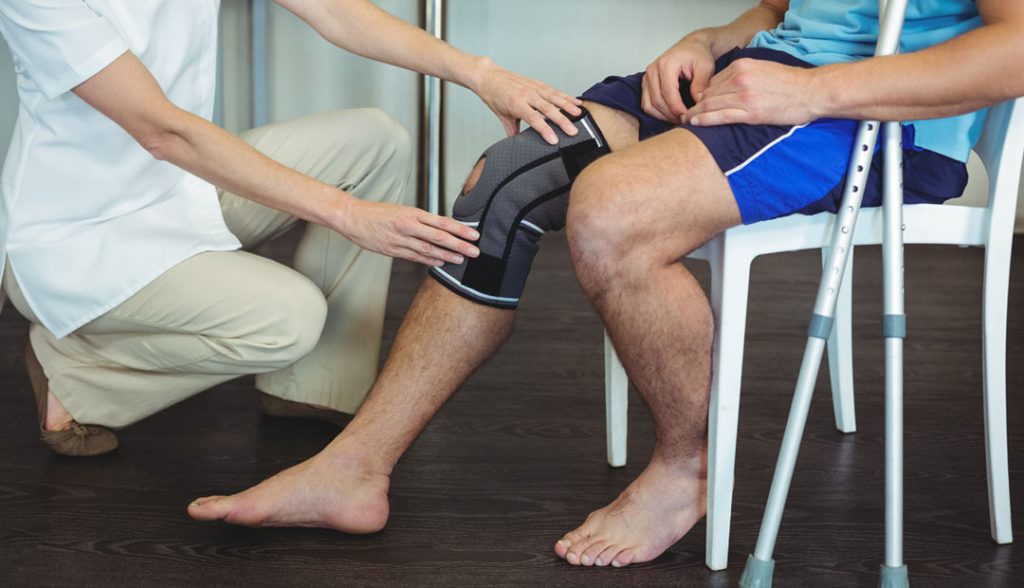A meniscus is a C-shaped cartilage disk that is found on the inner and outer aspect of the knee. These menisci function as a shock absorber in the knee so that heavy weight bearing forces can be evenly distributed across the knee. This avoids point-loading of the other type of cartilage in the knee called articular cartilage, which forms a smooth lining on the ends of our bones. The meniscus also adds to the stability of the knee joint as it increases the conformity of the bones.
Many people report that they have a ‘torn cartilage’ but in fact the majority actually have a meniscus tear. Most meniscus tears occur from a weight bearing twisting type injury. Some middle aged and older patients may have tears without a specific injury and these are often a result of degeneration of the meniscus tissue. Symptoms of meniscus tears can include pain and swelling of the knee. If the swelling is severe it may even form a ‘baker’s cyst’ which is a swelling in the back of the knee. Some people experience more mechanical symptoms like clicking, catching and locking in the knee.
There are various factors that determine the treatment approach. Not all tears of the meniscus are the same. The first step is to make the diagnosis and determine if the tear is the source of pain. This requires a careful history, examination and usually an MRI scan. Chronic tears and tears that occur in older patients generally have less potential to heal.
The next step is to determine the type of tear and location of the tear. This is important because only the outer one third of the meniscus receives enough blood flow to provide healing potential. The inner aspect survives on nutrients from the fluid in the knee which limits the repair capabilities. There are various patterns or types of tears that can be seen on MRI.
Treatment decisions depend on the size and location of the tear, as well as age and how long the tear has been present. Meniscal tears that occur in younger patients in the peripheral part of the meniscus are often repairable. This involves arthroscopic surgery with a camera in the knee joint to guide carefully placed sutures across the tear to stabilise it. More commonly, tears occur in middle aged patients when the tissue has become more degenerative. Whilst these tears rarely heal, they quite often settle with non-operative treatment. This includes basic rest, ice, elevation and simple analgesics. A good physiotherapy program will help you to regain range of motion, reduce swelling and increase muscle strength around the knee. Cortisone injections may also provide temporary relief. If these conservative measures fail then arthroscopic treatment should be considered to either repair or resect the proud edges of the meniscus.
In recent years we have become more aware of tears in the root of the meniscus. This tear occurs where the meniscus attaches to the bone at the back of the knee, significantly reducing the shock absorption function of the meniscus. These injuries often occur in middle aged patients resulting in severe pain and often rapid onset of arthritis. New techniques have recently been developed to repair these tears back to the bone. If there is minimal arthritis these techniques can often delay or prevent the need for knee replacement surgery in the future.
Meniscus tears remain a common source of knee pain. No single tear is the same and these injuries require a careful assessment and treatment.

